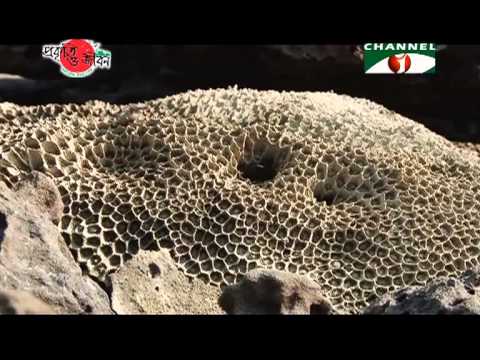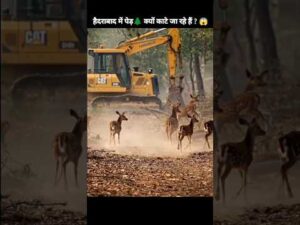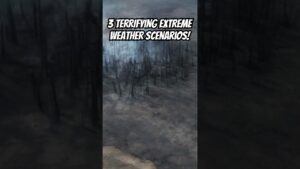
Our fertile country is the world’s largest Delta.
Effluent rivers Padma, Meghna & Jamuna and the continuous flow of Monsoon weather have enriched this country with diversified floras.
These floras have been providing various species of wildlife with feeding and shelter.
The country’s environment and nature have been formed with soil, forests, rivers, plants and animals etc.
But Bangladesh is geographically one of the most disaster-prone areas of the world.
Natural catastrophes hit the country’s environment and ecosystem very often.
Along with these, adverse impacts of global climate change have been severely distorting the ecological balance of the country.
Continuous emission of CO2, by the developed countries, is accelerating the change in climate.
As a result, global temperature is constantly rising.
Hence, various problems are arising including Sea level rise.
The earth is gradually becoming uninhabitable.
The most affected are the developing countries like Bangladesh.
A large portion of our country is coastal zone.
This coastal region consists of numerous Islands, Chars and Mangrove forest.
Due to the rich diversity in plants, animals and areas this region is considered to be the heaven for biodiversity.
A large part of this heaven is Sundarbans.
With diversified plants, a unique ecosystem has been developed here on the salty soil.
Sundarbans is a unique world of biodiversity.
This forest is rich with Bengal Tiger, Deer, Monkey, Python, Bird and so on.
Ganges river dolphins, saltwater crocodiles, fishes etc. aquatic animals roam in the rivers of this forest.
Sundarbans’ such ecosystem is now endangered due to adverse impacts of climate change.
Much of the Sundarbans’ beauty has faded away due to disasters like Sidr, Aila etc.
Since many plants have been uprooted, it is no longer as green as before.
Many wildlife have been deceased.
Moreover, some plants species have come to the brink of extinction due to increase of salinity in water.
Resident fishes are decreasing due to increase of salinity in rivers.
Numerous species of aquatic animals are vanishing including Ganges river dolphins.
Scarcity of food is disrupting wildlife’s usual way of life.
Many wildlife have lost their habitat.
As a result, wildlife are migrating to neighboring human territories in quest of feeding.
This have been resulting in human-wildlife conflicts.
Alongside Sundarbans, other coastal Islands and Chars are also being harmed by climate change.
Resident and migratory Bird enriched these Islands have become highly vulnerable due to climate change.
Loss of these Islands will make various Birds and Sea Turtles endangered.
For climate change, the country’s only Coral Island- St. Martin is also threatened.
Impacts of climate change may destroy the Corals of this Island.
Along with this, coral dependent organisms will also go extinct.
Cyclones are hitting our coastal region very often.
Saline water is breaking into coastal embankments and polluting lands.
Plants are being damaged here.
As a result, plant reliant wildlife are being displaced.
Number of wildlife is gradually decreasing due to difficulty in breeding system.
Again, intrusion of saline water is damaging the ecosystem of Canals, Beels and Ponds.
This is hampering the life of our resident fishes and various other aquatic organisms.
Agricultural production is decreasing due to increased salinity in the soil.
Both excessive rainfall and insufficient rainfall are occurring due to climate change.
Excessive rainfall is creating flood very often.
Hence biodiversity of flooded area is being damaged.
Northern regions suffer the most due to insufficient rainfall.
Drought is occurring in these regions due to adverse climate.
For severe drought earth is cracking up, causing damage in terrestrial ecosystem, imbalance in biodiversity and decrease in agricultural production.
Climate change is a global concern.
No individual, organization or country can fight the adverse impacts of climate change alone.
We have to find out the reason behind climate change problem and work together to solve it.
We should use ecofriendly technologies.
We all have to be ethical in order for biodiversity, environment and the world to live long.
Coastal afforestation needs to be initiated promptly to avoid catastrophes in coastal region.
Initiatives have to be taken to protect coastal Islands and Chars as well.
Otherwise, our rich biodiversity will be wasted and our world will become uninhabitable.
Therefore, we must protect our natural environment from the adverse impacts of climate change to ensure development of our country.
Planner, Director and Anchor: Muqeed Majumdar Babu.
Research & Script: Mushfiq Ahmed, Shamim Ahmed.
Subtitle: A M M Khairul Anam (Mithu).
Voiceover: Khairul Ahasun Shohag.
Video Editor: Arif Baharder.
Coordinator: Kibria Saroar Roman.
Cameraman: Billal Howlader.
Panel Producer: Sohel Mazumder.
Website: www.pojf.org
source



